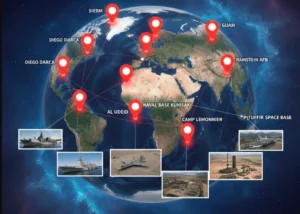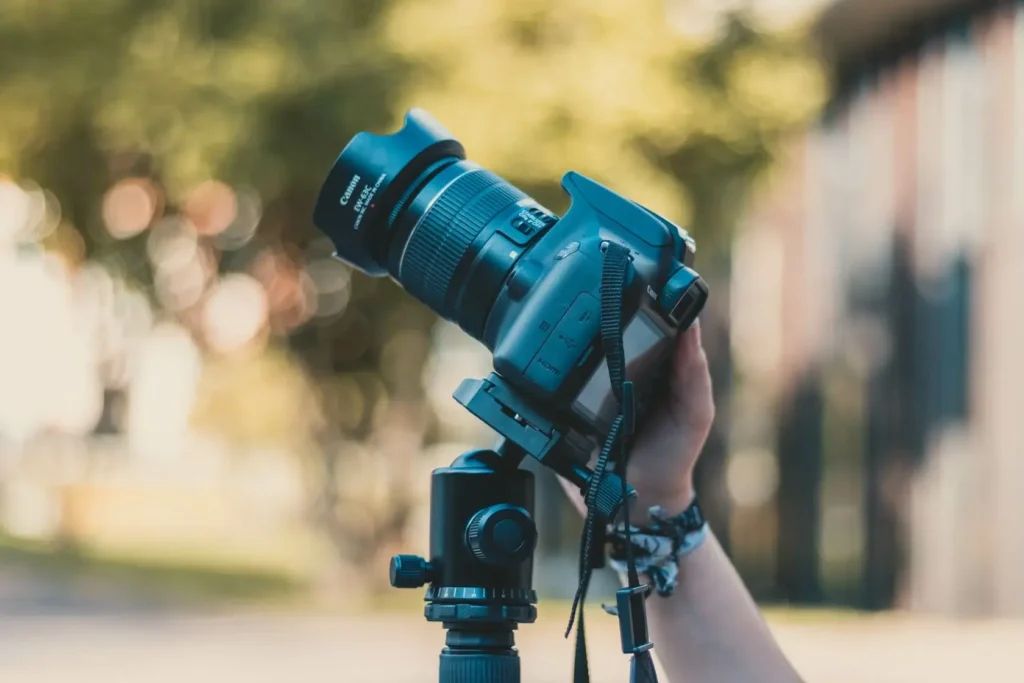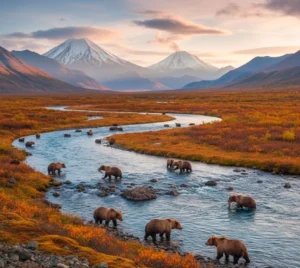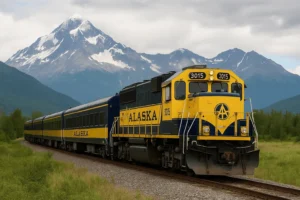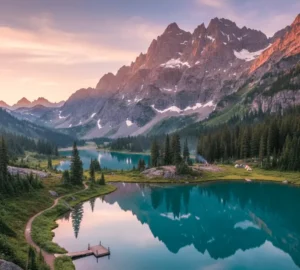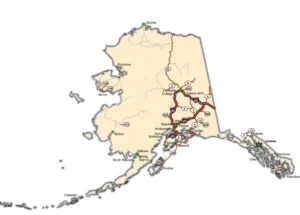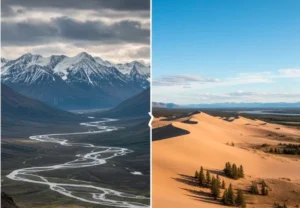Have you ever imagined capturing the breathtaking beauty of Alaska, where the landscapes look like they haven’t changed in forever and nature is everywhere?
This guide helps you turn that dream into amazing photos. Alaska provides a unique backdrop. But how can you make sure your photos capture this incredible beauty just right? Let me share with you the photography guide including what photography gear and locations are right for you.
Choose the Right Essential Photography Gear
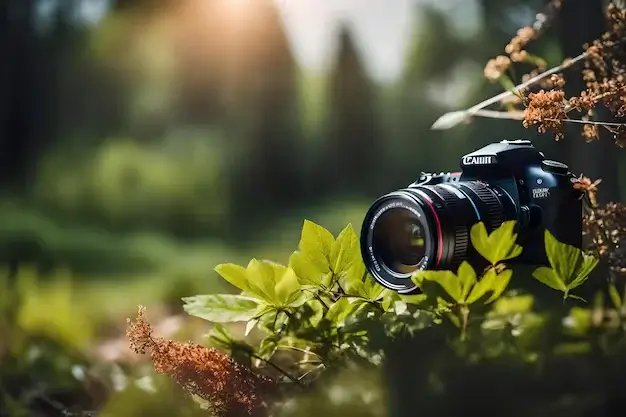
Starting a photography adventure in Alaska isn’t just about having enthusiasm and know-how; it’s also crucial to have the proper gear. Getting to know the details of various cameras and lenses can boost your ability to take amazing photos of Alaska’s varied scenery and animals.
DSLRs vs. Mirrorless Cameras
DSLRs have long been the choice of many professional photographers due to their robust build, excellent battery life, and extensive lens and accessory options. The optical viewfinder in DSLRs allows you to see exactly what the lens sees, without any digital lag.
This can be particularly useful in fast-moving situations or in bright light conditions where electronic viewfinders might struggle. However, DSLRs tend to be bulkier and heavier, which could be a consideration if you’re trekking through Alaska’s diverse terrains.
Mirrorless Cameras
Mirrorless cameras are a more recent innovation in the photography world. They are typically lighter and more compact than DSLRs, which can be a significant advantage when traveling through Alaska’s vast landscapes. Mirrorless cameras offer real-time previews of your image through the electronic viewfinder, allowing you to see the effects of your settings instantly.
They also tend to have faster shooting speeds and better video capabilities. However, they might fall short in terms of battery life and have a more limited selection of lenses and accessories, although this is rapidly changing.
Lenses: Wide-angle, Telephoto, and Macro
Wide-angle Lenses
Wide-angle lenses are ideal for capturing Alaska’s expansive landscapes. They allow you to encompass vast scenes, from towering mountains to sprawling tundras, in a single frame.
These lenses are also great for capturing the dynamic skies and the aurora borealis, offering a broad perspective that conveys the grandeur of Alaska’s natural beauty.
Telephoto Lenses
Telephoto lenses are essential for wildlife photography and capturing distant landscapes.
They allow you to get close-up shots of animals without disturbing them, which is crucial in maintaining ethical wildlife photography practices.
Whether you’re trying to photograph a moose in the distance or a bald eagle in flight, a telephoto lens can help you capture the details and essence of the moment.
Macro Lenses
While Alaska’s landscapes are grand, there’s also a world of detail to explore up close. Macro lenses allow you to capture these details, whether it’s the intricate patterns of ice crystals, the delicate textures of tundra vegetation, or the minute features of local flora and fauna.
These lenses can open up a new dimension in your photography, showcasing the small wonders that make up Alaska’s natural environment.
Understanding the Geographic Diversity of Alaska
Alaska’s vast and varied landscape is a testament to the Earth’s natural splendor, offering an array of geographical features that are as diverse as they are stunning.
From the rugged coastlines to the towering mountain ranges, and the dense forests to the expansive tundra and icefields, Alaska presents a unique array of ecosystems that captivate the hearts of nature enthusiasts and photographers alike.
Coastal Regions
The coastal regions of Alaska are a mesmerizing interface between land and sea, offering some of the most dramatic and dynamic landscapes in the state.
These areas are characterized by rugged cliffs, vast stretches of sandy beaches, and intricate networks of fjords and inlets. The coastal waters are teeming with marine life, including whales, seals, and an abundance of seabirds, making it a prime location for wildlife photography.
The interplay of light and water along Alaska’s coastlines, especially during sunrise and sunset, provides endless opportunities for capturing the beauty of these landscapes.
Mountain Ranges
Alaska is synonymous with its majestic mountain ranges, including the iconic Alyeska Resort, Denali, North America’s highest peak. These mountains are not just backdrops but are the very essence of Alaska’s identity.
The ranges vary from the snow-capped peaks of the Alaska Range to the rugged, volcanic Aleutian Range.
Each range offers a unique perspective on the power and beauty of nature, providing endless inspiration for landscape photography. The mountains are also home to a variety of wildlife, adding an extra layer of interest to your photographic pursuits.
Forests and Woodlands
The forests and woodlands of Alaska are a testament to the state’s rich biodiversity. From the rainforests of the Southeast to the boreal forests of the Interior, these ecosystems are a sanctuary for an array of flora and fauna.
The towering Sitka spruce, the ancient western red cedar, and the vibrant paper birch are just a few of the tree species that create these lush, green havens.
Photographing these areas allows you to capture the intricate details of the forest floor or the grandeur of the forest canopy, highlighting the interconnectedness of all living things.
Tundra and Icefields
The tundra and icefields represent Alaska’s stark beauty, where life thrives in the harshest of conditions.
The tundra, with its mosses, lichens, and low-lying shrubs, offers a unique landscape that changes dramatically with the seasons. In contrast, the icefields and glaciers are timeless landscapes, where ice has shaped the land over millennia.
These areas are crucial for understanding environmental changes and provide a stark, minimalist beauty that is unparalleled, offering a different kind of photographic challenge to capture their sublime and ethereal nature.
FAQs
What is the best time of year to visit Alaska for photography?
The best time depends on what you want to capture: summer (June to August) for lush landscapes and wildlife, winter (December to March) for northern lights and snowy scenes.
Do I need special permits to photograph in certain locations?
Yes, some areas, especially national parks and protected lands, may require permits for commercial photography or access to certain locations.
How can I ensure my safety while photographing in remote Alaskan areas?
Always inform someone of your travel plans, carry emergency supplies, be aware of local wildlife, and understand the weather conditions.
What are some tips for photographing Alaska’s wildlife without causing disturbance?
Use a telephoto lens to keep your distance, stay quiet, move slowly, and always prioritize the animal’s comfort and safety over getting the shot.


